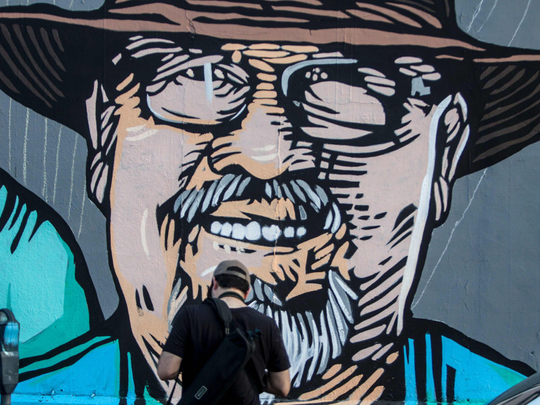
In most countries, panic buttons are devices used by the elderly who may need emergency care, or parents who want to keep tabs on wandering children and pets. But in Mexico, they’re part of the survival toolkit for journalists covering the drug war, corruption and other man-made miseries, enabling them to send a silent distress signal to authorities. Such is the state of news gathering in Latin America’s second-largest nation, which has overtaken Colombia — now emerging from half a century of guerrilla insurgency — to become the Western Hemisphere’s deadliest place to be a journalist.
None of this was news to Javier Valdez, the prize-winning investigative journalist gunned down in his car on May 15 in Culiacan, a regional capital in Mexico’s wild northwest. Perhaps on the hunch that official caretakers and an electronic gadget were frail guarantees for his beat, Valdez was not among the 405 journalists and activists filing for federal protection in the last five years under Mexico’s Mechanism for the Protection of Human Rights Defenders and Journalists. At Riodoce, the independent magazine he co-founded in Sinaloa state, home to the county’s most notorious criminal cartel and its erstwhile crime kingpin, Joaquin “El Chapo” Guzman, his job was reporting on Mexico’s underworld.
Valdez’s death has since prompted a national commotion, revolt among the country’s media, emergency meetings by federal and local authorities, plus heartfelt official pledges to overhaul the justice system and safeguard the free press. But unless public authorities can back up the encomiums with enforcement, and bring media predators to justice, the sanctimony will ring hollow.
Valdez was the sixth Mexican reporter gunned down this year and the 41st to die since 1992 while investigating nefarious activities; another 50 have died in reportedly murky circumstances, according to a recent report by the Committee to Project Journalists (CPJ). And killing is only the most extreme form of payback doled out to media members, who routinely face intimidation, death threats and kidnappings.
Attacks on journalists have increased 29 per cent since President Enrique Pena Nieto took office in 2012, and 163 per cent since 2010, at the height of his predecessor Felipe Calderon’s heavy-handed campaign against drug cartels. “This is one of the bloodiest times for journalism in Mexico,” Jan-Albert Hootsen, the CPJ’s Mexico correspondent, told me.
This surge in violence collides with the promises that Pena Nieto rode into office. Following the Calderon government’s failed war on drugs, which claimed some 120,000 lives in six years, Pena Nieto hoped to bolster transparency and public safety. In one important early initiative, he sponsored enabling laws to empower the prosecution of crimes against journalists. Before that, due to a surrealist legal rabbit hole that only Octavio Paz could appreciate, the country’s Special Prosecutor for Crimes against Freedom of Expression had no jurisdiction to take most such cases to trial.
Critics say that the government’s efforts to keep journalists from harm have been hampered by underfunding and mission drift. In a May 2 report, the CPJ found that Mexico’s measures to increase security measures for endangered reporters were insufficient. “More than combating violence, Pea Nieto fought to change public optics, on the argument that perception of violence was worse than the reality,” said Rosental Calmon Alves, head of the Knight Center for Journalism, which trains journalists throughout the Americas. “That strategy hasn’t worked,” Alves told me.
Even more sinister, according to the Ministry of the Interior, under Pena Nieto’s watch public officials were likely suspects in more than one in three attacks on journalists. Under pressure, the Mexican attorney general fired a special prosecutor, whose efforts to prosecute crimes against journalists had fallen short. Five days later, Valdez was fatally shot.
Promiscuousness between bandits and authorities may be one reason why so many crimes against reporters go unpunished in Mexico, which rated as the sixth worst country on CPJ’s annual impunity index and 147th out of 180 countries on the Reporters Without Borders ranking for world press freedom. Valdez knew something about impunity and how few of the nominally democratic country’s institutions were untouched by crime and corruption — including the news media. Journalists learned to watch their words, quietly pocket hush money or “chayote”, or face the consequences. Valdez refused to watch his words.
— Bloomberg
Mac Margolis writes about Latin America for Bloomberg View. He was a reporter for Newsweek and is the author of The Last New World: The Conquest of the Amazon Frontier.








